<< Previous | Displaying results 2776-2800 of 6771 for "" | Next >>
An antisemitic illustration from a Nazi film strip. The caption, translated from German, states: "As an alien race Jews had no civil rights in the middle ages. They had to reside in a restricted section of town, in a ghetto." Place and date uncertain.
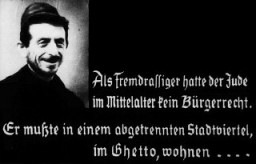
Chart showing the breakdown of Jews and Jews of "mixed race" (Mischlinge) within the total German population of 1939.
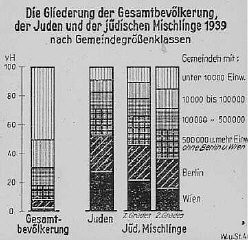
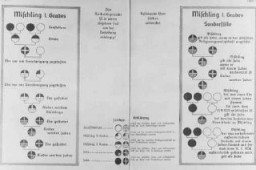
Dr. Joseph Jaksy, who rescued 25 Jews during the war. He provided them with hiding places, money, medicine and forged identification papers. Jaksy was named "Righteous Among the Nations." Czechoslovakia, prewar.
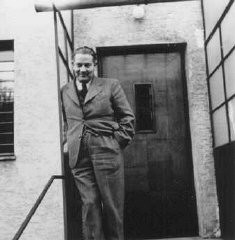
Dr. Joseph Jaksy poses with (from left to right) Valeria Suran, Lydia Suran, and his wife. The Suran sisters were among 25 Jews Dr. Jaksy rescued during the war. Czechoslovakia, date uncertain.
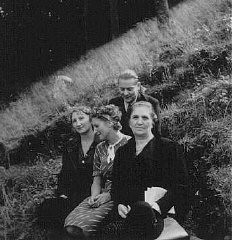
Rabbi Marcus Melchior, Danish chief rabbi, who warned his congregants that the Germans intended to round up Denmark's Jews. Melchior himself went into hiding and escaped to Sweden. Copenhagen, Denmark, before 1943.
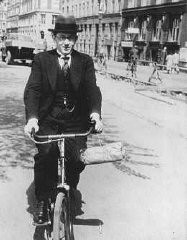
Danish fishermen (foreground) ferry Jews across a narrow sound to safety in neutral Sweden during the German occupation of Denmark. Sweden, 1943.

Danish fishermen used this boat to carry Jews to safety in Sweden during the German occupation. Denmark, 1943 or 1944.
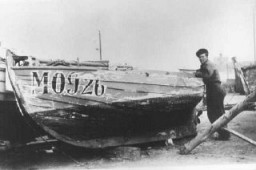
Quaker delegates of the American Friends Service Committee who set up a relief and rescue operation in Toulouse. France, January 1941.
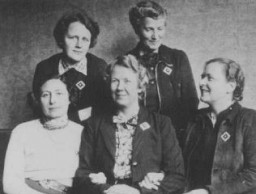
Hannah Szenes, in the garden of her Budapest home before she moved to Palestine and became a parachutist for rescue missions. Budapest, Hungary, before 1939.
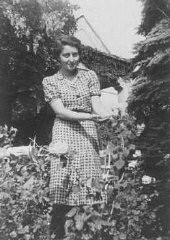
A group of children who were sheltered in Le Chambon-sur-Lignon, a town in southern France. Le Chambon-sur-Lignon, France, August 1942.
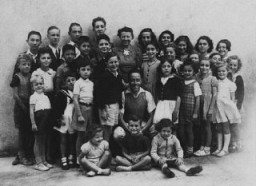
Stefania Podgorska (right), pictured here with her younger sister Helena (left), helped Jews survive in German-occupied Poland. She supplied food to Jews in the Przemysl ghetto. Following the German destruction of the ghetto in 1943, she saved 13 Jews by hiding them in her attic. Przemysl, Poland, 1944.
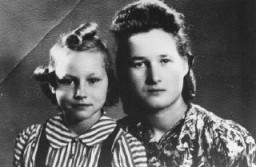
Six Jewish girls hidden from the Nazis at the Dominican Convent of Lubbeek near Hasselt. Belgium, between October 1942 and October 1944.
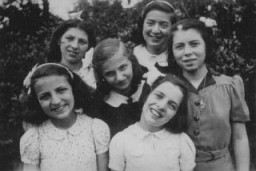
The house in Amsterdam where Tina Strobos hid over 100 Jews in a specially constructed hiding place. Her house was raided eight times, but the Jews were never discovered. Netherlands, date uncertain.
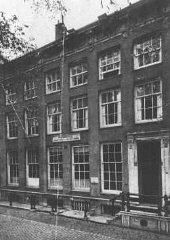
Gertruda Babilinska with Michael Stolovitzky, a Jewish boy she hid. Yad Vashem recognized her as Righteous Among the Nations. Vilna, 1943.
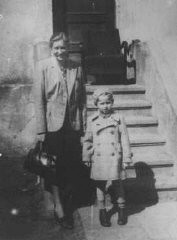
Hermine Orsi sheltered a number of Jews in her home and helped others reach refuge in Le Chambon-sur-Lignon. Yad Vashem recognized her as "Righteous Among the Nations." Marseille, France, 1940.
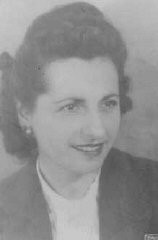
Calvinist minister Gerardus Pontier and his wife, Dora Wartema, at Yad Vashem, where they were honored for hiding Jewish children in the Netherlands. Pontier and Wartema were named "Righteous Among the Nations." Jerusalem, Israel, 1968.
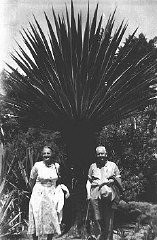
Bert and Anne Bochove, who hid 37 Jews in their pharmacy in Huizen, an Amsterdam suburb, pose here with their children. The two were named Righteous Among the Nations. The Netherlands, 1944 or 1945.
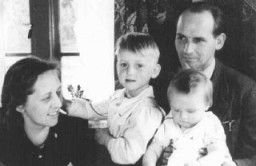
Semmy Woortman-Glasoog with Lientje, a 9-month-old Jewish girl she hid. Woortman-Glasoog was active in a network which found foster homes, hiding places, and false papers for Jewish children. She was later named "Righteous Among the Nations." Amsterdam, the Netherlands, between 1942 and 1944.

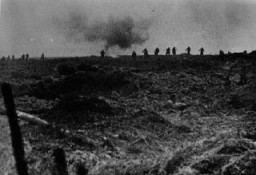
Units of a German armored division on the eastern front in February 1944. Soviet forces, largely on the offensive since the battle of Stalingrad, pushed German troops to the borders of East Prussia by the end of 1944. Soviet Union, February 1944.
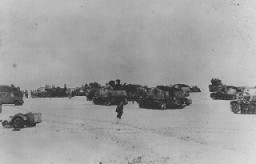
A German soldier stands guard on the eastern front. Soviet Union, February 28, 1944.
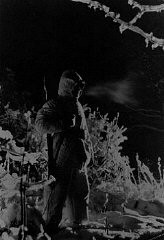
Soviet soldiers guard the entrance to Adolf Hitler's underground bunker. Upon the advance of Soviet forces through the streets of Berlin, Hitler committed suicide here on April 30, 1945, rather than face capture. Berlin, Germany, 1945.
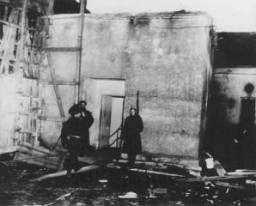
Soviet soldiers in a street in the Soviet occupation zone of Berlin following the defeat of Germany. Berlin, Germany, after May 7, 1945.
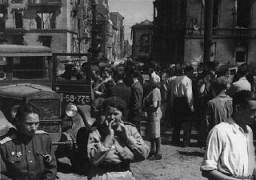
Soviet soldiers in a street in the Soviet occupation zone of Berlin following the defeat of Germany. Berlin, Germany, after May 9, 1945.
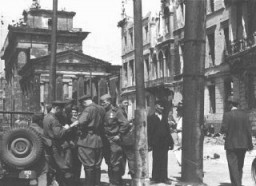
We would like to thank Crown Family Philanthropies, Abe and Ida Cooper Foundation, the Claims Conference, EVZ, and BMF for supporting the ongoing work to create content and resources for the Holocaust Encyclopedia. View the list of donor acknowledgement.